 Search by Keyword
Sign Up Below for our MONTHLY BEATLES TRIVIA QUIZ!
|
"KANSAS CITY/HEY-HEY-HEY-HEY!"
(Jerry Leiber - Mike Stoller - Richard Penniman)
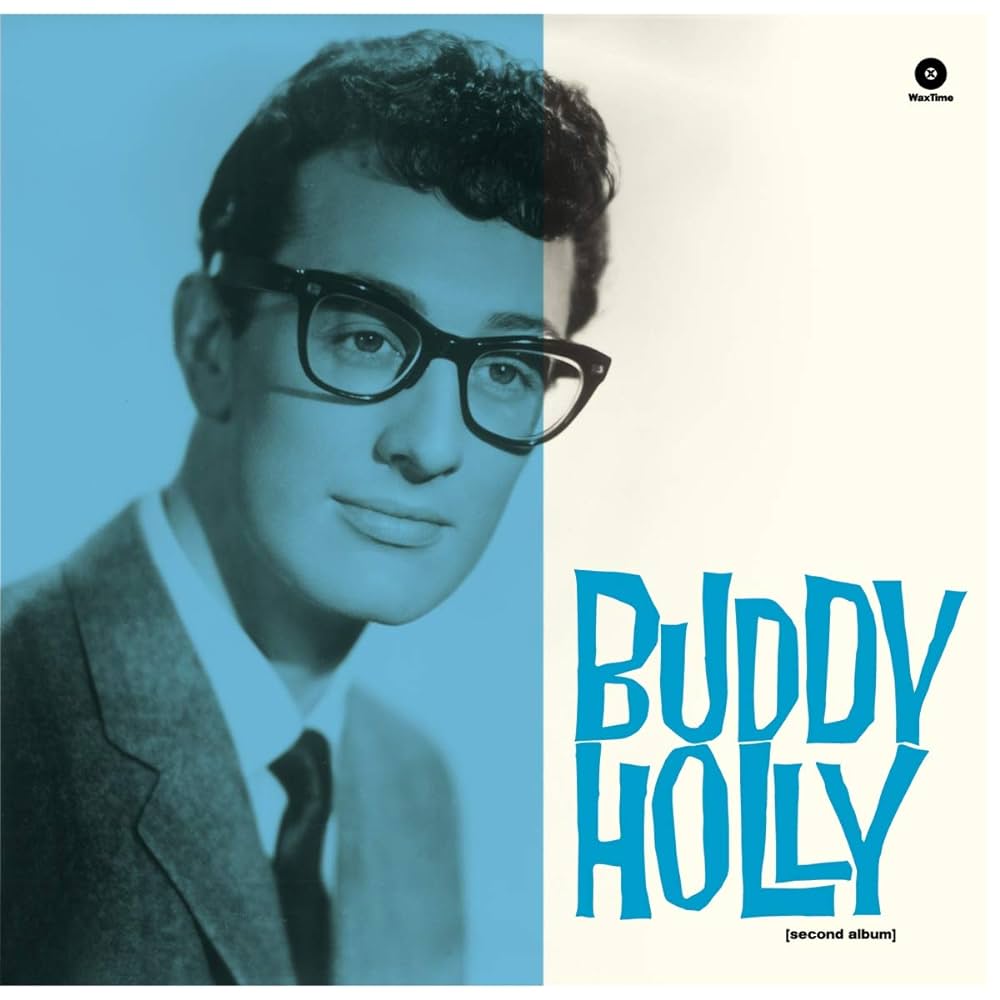 "In our imaginations back then, John was Buddy (Holly) and I was Little Richard...You're always someone when you start." This was how McCartney described the personages Lennon and himself aspired to in their teenage years. Paul acquired the knack of imitating Little Richard's screaming vocals, which he was proud to display among his peers even before there were Beatles. "In our imaginations back then, John was Buddy (Holly) and I was Little Richard...You're always someone when you start." This was how McCartney described the personages Lennon and himself aspired to in their teenage years. Paul acquired the knack of imitating Little Richard's screaming vocals, which he was proud to display among his peers even before there were Beatles.
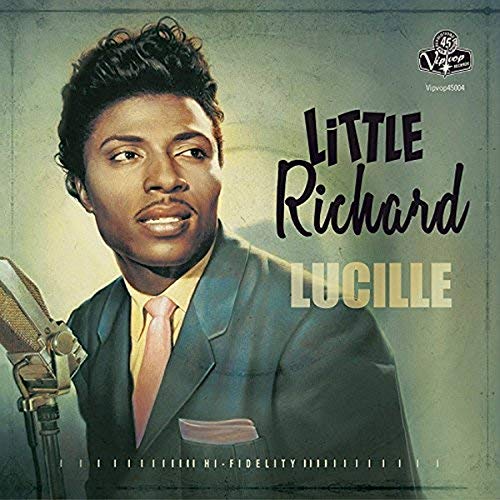 After the group was formed and they began their long engagements in Hamburg, there was a dire need for more material to play. "We had to learn millions of songs," explained George Harrison. "We had to play so long we just played everything...We'd get a Chuck Berry record, and learn it all, same with Little Richard...Hamburg was really like our apprenticeship, learning how to play in front of people." After the group was formed and they began their long engagements in Hamburg, there was a dire need for more material to play. "We had to learn millions of songs," explained George Harrison. "We had to play so long we just played everything...We'd get a Chuck Berry record, and learn it all, same with Little Richard...Hamburg was really like our apprenticeship, learning how to play in front of people."
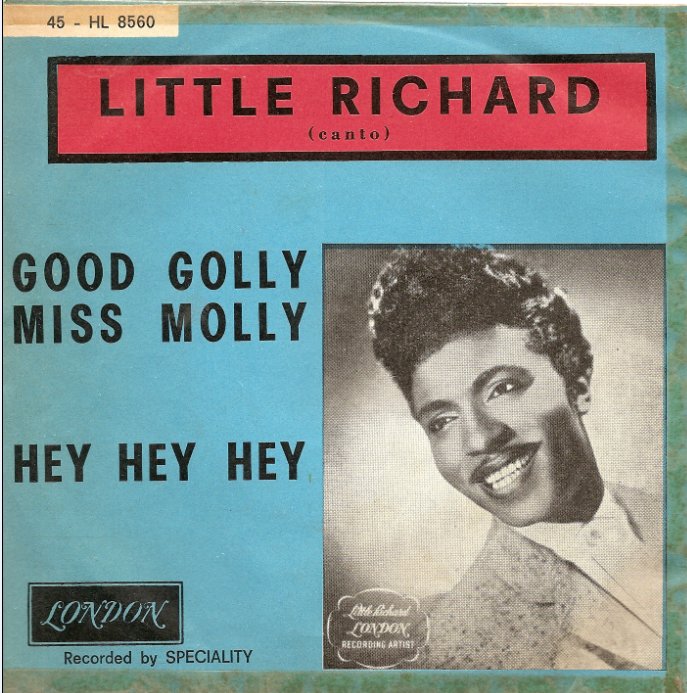 Under these circumstances, The Beatles ended up perfecting eleven Little Richard songs, including most of his big hits (such as "Good Golly Miss Molly," "Tutti-Frutti" and "Lucille"). Being always in search of new material, they even delved into the more obscure tracks Little Richard recorded, such as "Miss Ann," "Send Me Some Lovin'" and an obscure medley that he had recorded in 1959 that paired the Leiber/Stoller song "Kansas City" with a self-penned b-side named "Hey-Hey-Hey-Hey!" "'Kansas City' is one of my all-time favorite records, actually," McCartney told engineer Geoff Emerick in October of 1964. Under these circumstances, The Beatles ended up perfecting eleven Little Richard songs, including most of his big hits (such as "Good Golly Miss Molly," "Tutti-Frutti" and "Lucille"). Being always in search of new material, they even delved into the more obscure tracks Little Richard recorded, such as "Miss Ann," "Send Me Some Lovin'" and an obscure medley that he had recorded in 1959 that paired the Leiber/Stoller song "Kansas City" with a self-penned b-side named "Hey-Hey-Hey-Hey!" "'Kansas City' is one of my all-time favorite records, actually," McCartney told engineer Geoff Emerick in October of 1964.
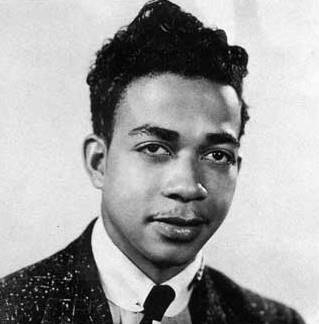 The Beatles were very proud of the fact that they were able to premier relatively unknown material to their growing audiences. So much so, in fact, that when it came to choosing cover songs to properly record for their albums, many times they picked these, as evidenced by "Devil In Her Heart" and "Boys." Once again, they opted for the obscure instead of the obvious. And I'm sure we all can be grateful for that because what we were treated to was an unfamiliar reading of a song America was familiar with by Wilbert Harrison. No mention of "crazy little women" in this version of Kansas City, but somehow we knew it was the same song. The Beatles were very proud of the fact that they were able to premier relatively unknown material to their growing audiences. So much so, in fact, that when it came to choosing cover songs to properly record for their albums, many times they picked these, as evidenced by "Devil In Her Heart" and "Boys." Once again, they opted for the obscure instead of the obvious. And I'm sure we all can be grateful for that because what we were treated to was an unfamiliar reading of a song America was familiar with by Wilbert Harrison. No mention of "crazy little women" in this version of Kansas City, but somehow we knew it was the same song.
Songwriting History
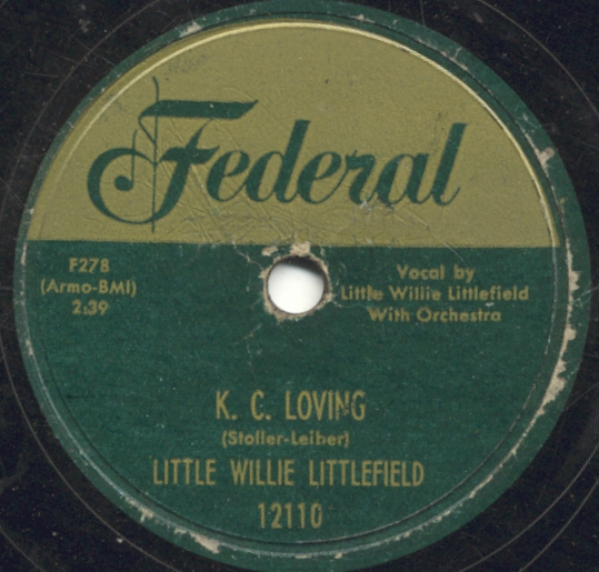 Jerry Leiber and Mike Stoller are known as one of the most popular and influential songwriting teams in the history of popular music. After meeting in Los Angeles and finding that they both shared a particular fascination with rhythm and blues, they began writing songs together. One of their first efforts was their 1951 composition "Kansas City," which was recorded under the title "K.C. Loving," by Little Willie Littlefield in 1952 on Federal Records. Ralph Bass of Federal Records changed the title to something he thought sounded a little "hipper." Jerry Leiber and Mike Stoller are known as one of the most popular and influential songwriting teams in the history of popular music. After meeting in Los Angeles and finding that they both shared a particular fascination with rhythm and blues, they began writing songs together. One of their first efforts was their 1951 composition "Kansas City," which was recorded under the title "K.C. Loving," by Little Willie Littlefield in 1952 on Federal Records. Ralph Bass of Federal Records changed the title to something he thought sounded a little "hipper."
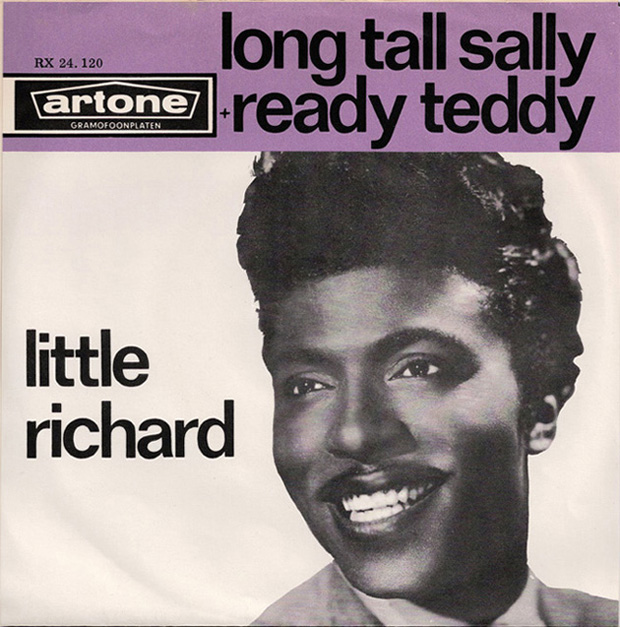 The original lyrics to this song were considered a little risqué for its time, including the line "they got a crazy way of loving there and I'm gonna get me some." One of the first cover versions of the song was recorded on November 29th, 1955 by Little Richard. While he kept pretty strict to the original lyrics, he incorporated a recurring "Bye-bye, baby, bye" section to the song in his own flamboyant style. This version of the song did not get a single release but took a back seat to his high energy original compositions, such as "Long Tall Sally" and "Rip It Up." The original lyrics to this song were considered a little risqué for its time, including the line "they got a crazy way of loving there and I'm gonna get me some." One of the first cover versions of the song was recorded on November 29th, 1955 by Little Richard. While he kept pretty strict to the original lyrics, he incorporated a recurring "Bye-bye, baby, bye" section to the song in his own flamboyant style. This version of the song did not get a single release but took a back seat to his high energy original compositions, such as "Long Tall Sally" and "Rip It Up."
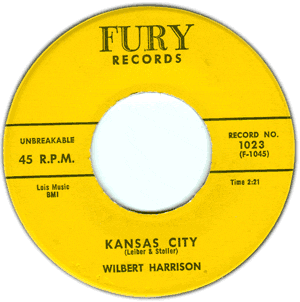 It was then picked up by North Carolina born Wilbert Harrison who released the song under its original title "Kansas City" in 1959 which earned him a #1 hit on the Billboard pop chart. While staying mostly with the original lyrics, he did change one key line which became the focal point of the song: "They got some crazy little women there, and I'm gonna get me one." It was then picked up by North Carolina born Wilbert Harrison who released the song under its original title "Kansas City" in 1959 which earned him a #1 hit on the Billboard pop chart. While staying mostly with the original lyrics, he did change one key line which became the focal point of the song: "They got some crazy little women there, and I'm gonna get me one."
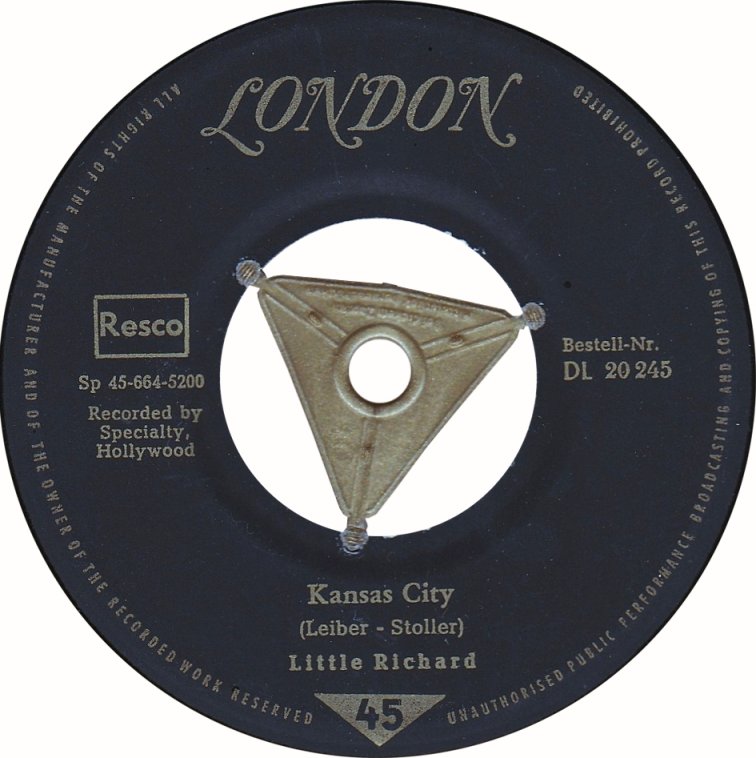 Probably because of the huge success of this new version of the song, Little Richard re-recorded it in 1959 with a whole new approach. Back on May 9th, 1956, Little Richard recorded an original composition entitled "Hey-Hey-Hey-Hey" which ended up as the b-side of his Top Ten 1958 hit "Good Golly Miss Molly." A decision was made to combine his original version of "Kansas City" (with his "bye-bye, baby, bye" section) with "Hey-Hey-Hey-Hey," complete with the staccato introduction. This time Little Richard was backed by Guitar Slim's band and had the vocal group The Chimes perform answering vocals during the "hey-hey-hey-hey" section of the song. While this version of the song peaked at #26 in Britain, Little Richard's popularity in America had diminished by mid 1958 and this record only made it to #95 in the US. Probably because of the huge success of this new version of the song, Little Richard re-recorded it in 1959 with a whole new approach. Back on May 9th, 1956, Little Richard recorded an original composition entitled "Hey-Hey-Hey-Hey" which ended up as the b-side of his Top Ten 1958 hit "Good Golly Miss Molly." A decision was made to combine his original version of "Kansas City" (with his "bye-bye, baby, bye" section) with "Hey-Hey-Hey-Hey," complete with the staccato introduction. This time Little Richard was backed by Guitar Slim's band and had the vocal group The Chimes perform answering vocals during the "hey-hey-hey-hey" section of the song. While this version of the song peaked at #26 in Britain, Little Richard's popularity in America had diminished by mid 1958 and this record only made it to #95 in the US.
This, of course, was enough for The Beatles to take notice of. They incorporated this medley into their live act by 1961, spurred on, no doubt, by witnessing Little Richard perform this rendition himself when they shared the same bill on different occasions.
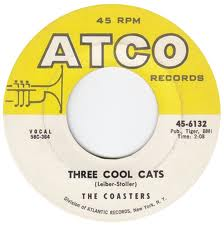 In reality, the version of the song recorded by The Beatles has extremely limited ingredients of the original "Kansas City" as written by Jerry Leiber and Mike Stoller, the obvious influence being the Little Richard adaptation of 1959. This is not to say that The Beatles were strangers to Jerry Leiber and Mike Stoller material. Amongst their early repertoire were classic tracks by The Coasters such as "Searchin'", "Young Blood" and "Three Cool Cats," all Jerry Leiber and Mike Stoller compositions. Two of these Beatles renditions were recorded during the Decca audition on January 1st, 1962 and can be found on "Anthology 1," while the other one can be found on "Live At The BBC." In reality, the version of the song recorded by The Beatles has extremely limited ingredients of the original "Kansas City" as written by Jerry Leiber and Mike Stoller, the obvious influence being the Little Richard adaptation of 1959. This is not to say that The Beatles were strangers to Jerry Leiber and Mike Stoller material. Amongst their early repertoire were classic tracks by The Coasters such as "Searchin'", "Young Blood" and "Three Cool Cats," all Jerry Leiber and Mike Stoller compositions. Two of these Beatles renditions were recorded during the Decca audition on January 1st, 1962 and can be found on "Anthology 1," while the other one can be found on "Live At The BBC."
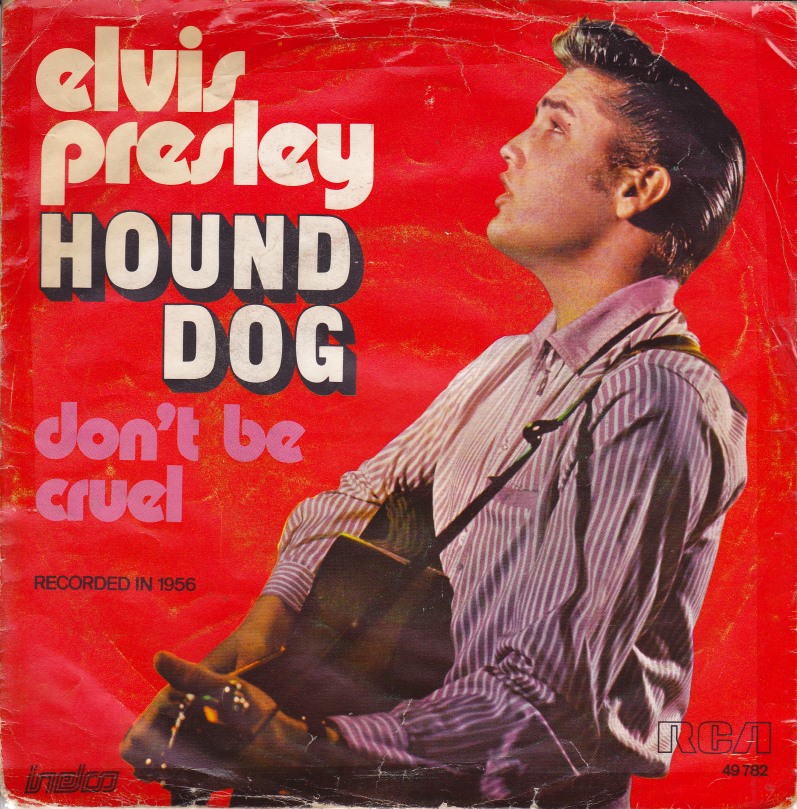 Jerry Leiber and Mike Stoller's songwriting career grew to staggering heights well beyond "Kansas City." Having written some of Elvis Presley's biggest early hits, such as the classics "Hound Dog" and "Jailhouse Rock," they also wrote many other popular classics. Among them are "Poison Ivy," "Ruby Baby," "Stand By Me," "Love Potion #9," "On Broadway" and the Grammy Award winning Peggy Lee hit "Is That All There Is?" Having a star on the Hollywood Walk Of Fame doesn't hurt their credibility either. Jerry Leiber, unfortunately, passed away on August 22nd, 2011 of cardio-pulmonary failure at age 78. Legendary rock and roll artist and songwriter Little Richard (aka Richard Penniman) died from a cause related to bone cancer on May 9th, 2020 at the age of 87. Jerry Leiber and Mike Stoller's songwriting career grew to staggering heights well beyond "Kansas City." Having written some of Elvis Presley's biggest early hits, such as the classics "Hound Dog" and "Jailhouse Rock," they also wrote many other popular classics. Among them are "Poison Ivy," "Ruby Baby," "Stand By Me," "Love Potion #9," "On Broadway" and the Grammy Award winning Peggy Lee hit "Is That All There Is?" Having a star on the Hollywood Walk Of Fame doesn't hurt their credibility either. Jerry Leiber, unfortunately, passed away on August 22nd, 2011 of cardio-pulmonary failure at age 78. Legendary rock and roll artist and songwriter Little Richard (aka Richard Penniman) died from a cause related to bone cancer on May 9th, 2020 at the age of 87.
 The Beatles fourth British album "Beatles For Sale"
|
Recording History
.jpg) The first time The Beatles brought "Kansas City/Hey-Hey-Hey-Hey!" into a recording studio was on July 16th, 1963 for BBC radio. This session was produced by Terry Henebery at BBC Paris Studio in London between 3 and 5:30 pm for the eighth edition of their radio program "Pop Go The Beatles," which aired on August 6th, 1963 between 5 and 5:29 pm. After this, the song was put on the back burner until it was resurrected on May 1st, 1964 for another British radio recording at BBC Paris Studios in London between 6:30 and 9:30 pm, which was produced by Bryant Marriott. This recording was broadcast on May 18th, 1964 between 10 am and 12 noon for the third edition of their new radio show "From Us To You." The song was then recorded again on July 17th, 1964 at BBC Paris Studio in London between 2:15 and 6;15 pm for the fourth edition of "From Us To You," this being produced by Bryant Marriott and broadcast on August 3rd, 1964 between 10 am and 12 noon. The first time The Beatles brought "Kansas City/Hey-Hey-Hey-Hey!" into a recording studio was on July 16th, 1963 for BBC radio. This session was produced by Terry Henebery at BBC Paris Studio in London between 3 and 5:30 pm for the eighth edition of their radio program "Pop Go The Beatles," which aired on August 6th, 1963 between 5 and 5:29 pm. After this, the song was put on the back burner until it was resurrected on May 1st, 1964 for another British radio recording at BBC Paris Studios in London between 6:30 and 9:30 pm, which was produced by Bryant Marriott. This recording was broadcast on May 18th, 1964 between 10 am and 12 noon for the third edition of their new radio show "From Us To You." The song was then recorded again on July 17th, 1964 at BBC Paris Studio in London between 2:15 and 6;15 pm for the fourth edition of "From Us To You," this being produced by Bryant Marriott and broadcast on August 3rd, 1964 between 10 am and 12 noon.
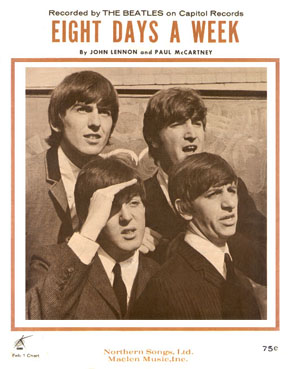 Since they were on "crunch time" in getting their fourth British album released before the end of 1964, The Beatles agreed to a marathon recording session at EMI Studio Two on Sunday, October 18th, 1964, in between dates of their hectic touring schedule. This nine hour session ran from 2:30 to 11:30 pm, which resulted in no less than eight finished songs. The first hour was taken up recording edit pieces for the previously recorded "Eight Days A Week." Then came some quick rehearsals for the next thing on their agenda, which was recording their version of the Little Richard medley "Kansas City/Hey-Hey-Hey-Hey!" Since they were on "crunch time" in getting their fourth British album released before the end of 1964, The Beatles agreed to a marathon recording session at EMI Studio Two on Sunday, October 18th, 1964, in between dates of their hectic touring schedule. This nine hour session ran from 2:30 to 11:30 pm, which resulted in no less than eight finished songs. The first hour was taken up recording edit pieces for the previously recorded "Eight Days A Week." Then came some quick rehearsals for the next thing on their agenda, which was recording their version of the Little Richard medley "Kansas City/Hey-Hey-Hey-Hey!"
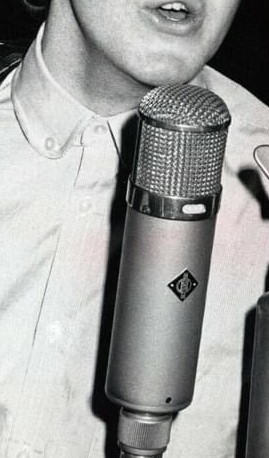 In a 2018 interview he gave on a Marc Maron podcast, Paul explains his love of singing Little Richard-style and the rehearsals of this day: "The little screamy voice, that's something I just loved. I loved his records, you know, and I wanted to do that. So that gave me a, sort of, feature thing within The Beatles, 'cause John couldn't do that. And I remember him saying to me, 'How do you do that, how do you do that?' I said, 'I don't know. I feel like it just comes out of the top of my head.' And he was like, 'Oh, wow!' And then we had a session once where we were, the early days, and I'm about to do 'Kansas City,' so I'm on the mic...and I'm going 'Ka...Kansas City, cough...,' and I'm not making it, I'm not getting it at all. So John comes down and he says, 'Remember, it comes out of the top of your head!' I said, okay, "KANSAS CITY...' And that's the take you hear." In a 2018 interview he gave on a Marc Maron podcast, Paul explains his love of singing Little Richard-style and the rehearsals of this day: "The little screamy voice, that's something I just loved. I loved his records, you know, and I wanted to do that. So that gave me a, sort of, feature thing within The Beatles, 'cause John couldn't do that. And I remember him saying to me, 'How do you do that, how do you do that?' I said, 'I don't know. I feel like it just comes out of the top of my head.' And he was like, 'Oh, wow!' And then we had a session once where we were, the early days, and I'm about to do 'Kansas City,' so I'm on the mic...and I'm going 'Ka...Kansas City, cough...,' and I'm not making it, I'm not getting it at all. So John comes down and he says, 'Remember, it comes out of the top of your head!' I said, okay, "KANSAS CITY...' And that's the take you hear."
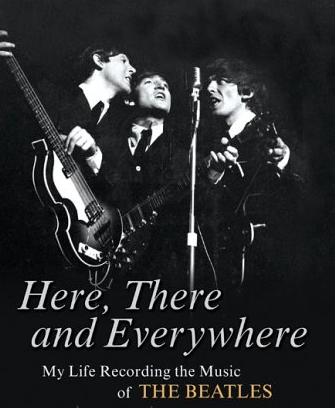 Geoff Emerick, the 2nd engineer on this day, relates in his book "Here, There and Everywhere" his recollections of this session: "Everyone's attention then turned to the first full song of the day, a cover medley of "Kansas City" and "Hey-Hey-Hey-Hey." From the way Paul was singing - nearly ripping his vocal cords apart - I was surprised that they had decided to do this song first, but after years of performing onstage, his voice was strong and could take the abuse. Notably, all the other Beatles - even Ringo, who hardly ever sang backing vocals - joined in on the chorus, doing the "hey hey hey" answering part. This medley was an established part of their live show at that point, and they really cut loose on it, playing with a confidence and a sheer, innocent joy that was positively infectious. I knew from that minute onward that it was going to be a great session. It was simply incredible to hear that much energy coming from the group so early in the day...They were locked in, right from the start, and that track is the definitive proof of what a great live band The Beatles were when they were in their prime." Geoff Emerick, the 2nd engineer on this day, relates in his book "Here, There and Everywhere" his recollections of this session: "Everyone's attention then turned to the first full song of the day, a cover medley of "Kansas City" and "Hey-Hey-Hey-Hey." From the way Paul was singing - nearly ripping his vocal cords apart - I was surprised that they had decided to do this song first, but after years of performing onstage, his voice was strong and could take the abuse. Notably, all the other Beatles - even Ringo, who hardly ever sang backing vocals - joined in on the chorus, doing the "hey hey hey" answering part. This medley was an established part of their live show at that point, and they really cut loose on it, playing with a confidence and a sheer, innocent joy that was positively infectious. I knew from that minute onward that it was going to be a great session. It was simply incredible to hear that much energy coming from the group so early in the day...They were locked in, right from the start, and that track is the definitive proof of what a great live band The Beatles were when they were in their prime."
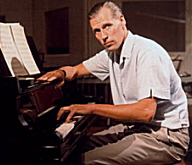 All four Beatles played this live, including all vocals, in two complete takes. "Take one" was determined to be the better one, therefore a couple overdubs were recorded onto this take. George Martin added a piano part throughout the song, although it ended up being quite low in the mix. The Beatles then added handclaps to the closing measures of the song, beginning with the "bye-bye, baby, bye-bye" section. The whole song was probably completed within a half hour, from approximately 3:30 to 4 pm. All four Beatles played this live, including all vocals, in two complete takes. "Take one" was determined to be the better one, therefore a couple overdubs were recorded onto this take. George Martin added a piano part throughout the song, although it ended up being quite low in the mix. The Beatles then added handclaps to the closing measures of the song, beginning with the "bye-bye, baby, bye-bye" section. The whole song was probably completed within a half hour, from approximately 3:30 to 4 pm.
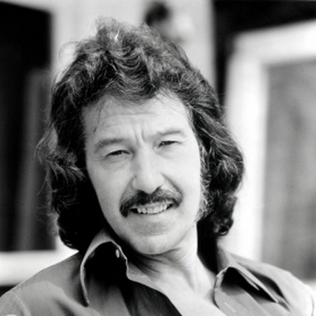 Both the mono and stereo mixes of the song were done on October 26th, 1964 in the control room of EMI Studio Two by George Martin and engineers Norman Smith and Tony Clark. A decision was made at this stage to fade out the song just before The Beatles performed their usual trademark ending. The mono mix fades out slightly earlier than the stereo mix. Both the mono and stereo mixes of the song were done on October 26th, 1964 in the control room of EMI Studio Two by George Martin and engineers Norman Smith and Tony Clark. A decision was made at this stage to fade out the song just before The Beatles performed their usual trademark ending. The mono mix fades out slightly earlier than the stereo mix.
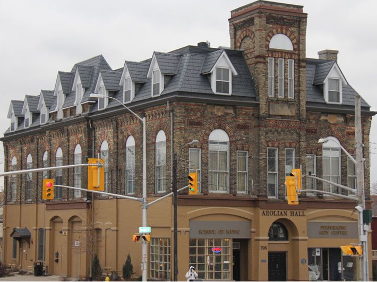 The last BBC radio recording The Beatles made of the song was on November 25th, 1964 in Studio One of Aeolian Hall in London between 7 and 10:30 pm, this session being produced by Jimmy Grant and Brian Willey. This recording was broadcast on December 26th, 1964 between 10 am and 12 noon on the popular radio show "Saturday Club." This is The Beatles' last known performance of the "Kansas City/Hey-Hey-Hey-Hey!" medley. The last BBC radio recording The Beatles made of the song was on November 25th, 1964 in Studio One of Aeolian Hall in London between 7 and 10:30 pm, this session being produced by Jimmy Grant and Brian Willey. This recording was broadcast on December 26th, 1964 between 10 am and 12 noon on the popular radio show "Saturday Club." This is The Beatles' last known performance of the "Kansas City/Hey-Hey-Hey-Hey!" medley.
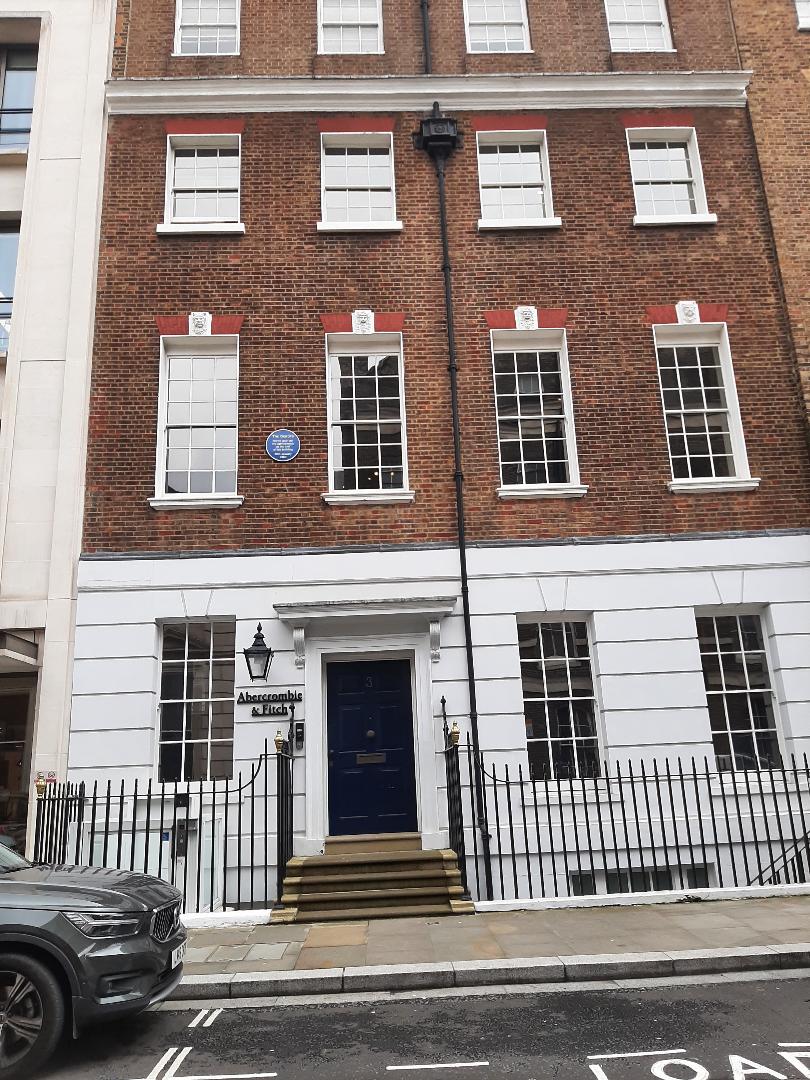 On January 26th, 1969, The Beatles hit upon the song once more during the recording of the "Get Back / Let It Be" sessions at Apple Studios. This time they opted for the Wilbert Harrison instead of the Little Richard version, even singing about the "crazy little women." After a couple verses, they immediately made it into a medley with two other Little Richard songs, "Miss Ann" and "Lawdy Miss Clawdy." On January 26th, 1969, The Beatles hit upon the song once more during the recording of the "Get Back / Let It Be" sessions at Apple Studios. This time they opted for the Wilbert Harrison instead of the Little Richard version, even singing about the "crazy little women." After a couple verses, they immediately made it into a medley with two other Little Richard songs, "Miss Ann" and "Lawdy Miss Clawdy."
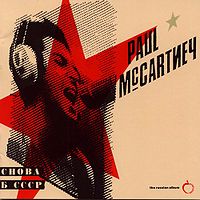 Paul McCartney took it to the recording studio himself on July 20th, 1987 for his Russian album entitled "CHOBa B CCCP." This version combines both the Wilbert Harrison version ("crazy little women") and the Little Richard version ("hey-hey-hey-hey"). Paul McCartney took it to the recording studio himself on July 20th, 1987 for his Russian album entitled "CHOBa B CCCP." This version combines both the Wilbert Harrison version ("crazy little women") and the Little Richard version ("hey-hey-hey-hey").
A recording of Paul and his band playing "Kansas City" live was made on May 31st, 1993 in Kansas City. This recording was then included on his live album "Paul Is Live," which was released later that year.
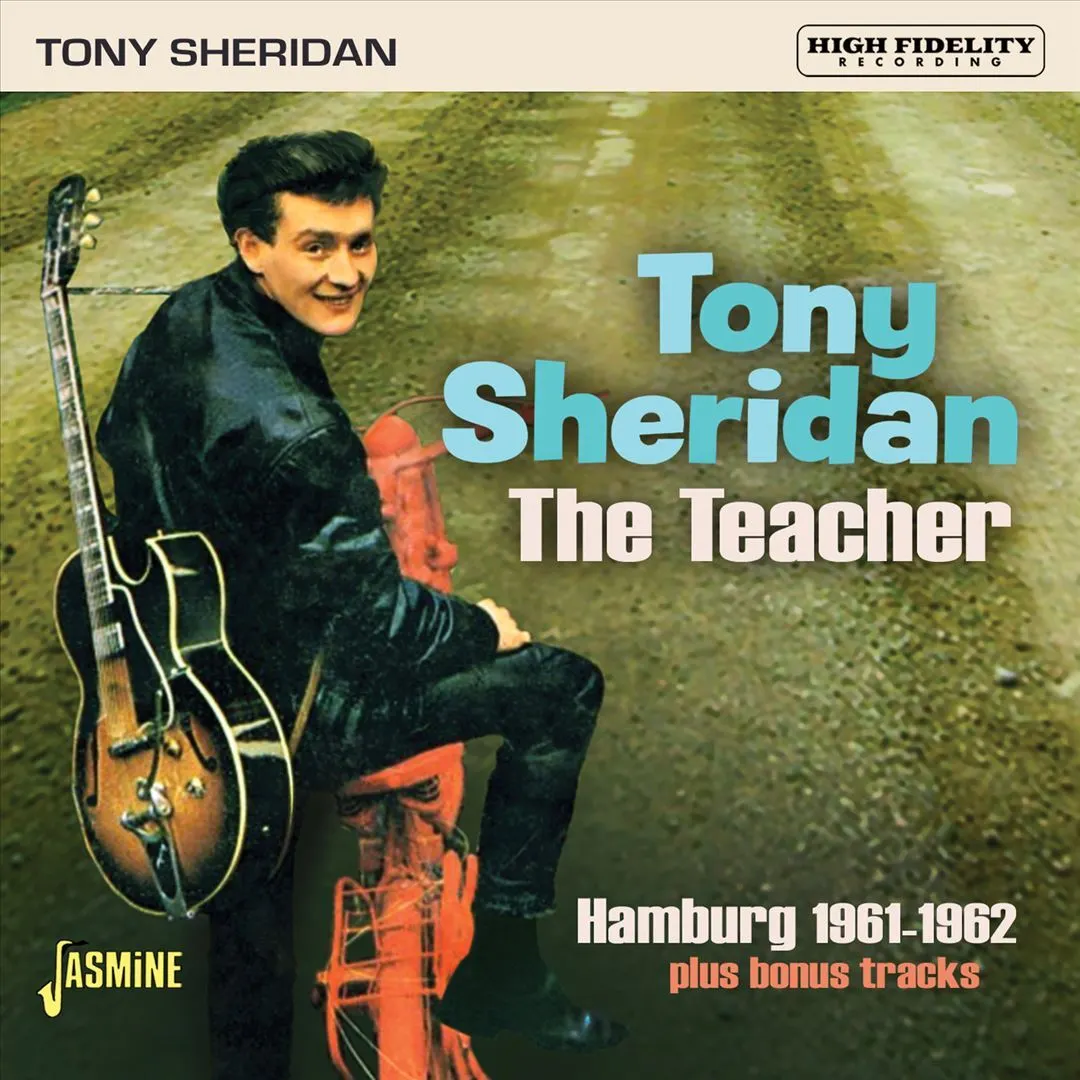 Although some sources claim that this medley was among the many songs The Beatles recorded with Tony Sheridan in Hamburg in 1961 or 1962, listening to the existing recording suggests otherwise. The saxophone and organ arrangement, along with the guitar work that is very uncharacteristic of either George or John, is evidence that a different backing band was utilized for this rendition. Although some sources claim that this medley was among the many songs The Beatles recorded with Tony Sheridan in Hamburg in 1961 or 1962, listening to the existing recording suggests otherwise. The saxophone and organ arrangement, along with the guitar work that is very uncharacteristic of either George or John, is evidence that a different backing band was utilized for this rendition.
Song Structure and Style
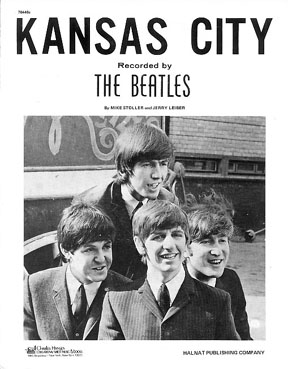 Here we finally have, in its purest form, a Beatles song in a straight 12-bar blues pattern without any deviation whatsoever. Apart from a four-measure introduction, every section consists of twelve measures and follows a natural blues chord progression. Since these are actually two songs melded together, the "Kansas City" part consists of three verses, the last of the three taking the form of a guitar solo. The "Hey-Hey-Hey-Hey!" part consists of four straight verses, the last one fading out during the ninth measure. Together it simply becomes 'verse/ verse/ verse (solo)/ verse/ verse/ verse/ verse' (or aaaaaaa). What's simpler than that? Here we finally have, in its purest form, a Beatles song in a straight 12-bar blues pattern without any deviation whatsoever. Apart from a four-measure introduction, every section consists of twelve measures and follows a natural blues chord progression. Since these are actually two songs melded together, the "Kansas City" part consists of three verses, the last of the three taking the form of a guitar solo. The "Hey-Hey-Hey-Hey!" part consists of four straight verses, the last one fading out during the ninth measure. Together it simply becomes 'verse/ verse/ verse (solo)/ verse/ verse/ verse/ verse' (or aaaaaaa). What's simpler than that?
 Although the song pattern, lyrics and even the key come directly from the 1959 Little Richard rendition, The Beatles do deviate from his arrangement in many places as we will see. The staccato four-measure introduction comes straight off of the Little Richard arrangement, but when the blues groove begins with the first verse, Paul sings Little Richard's second verse first, which ends with the line "it's a long, long time since my baby's been gone." The Beatles also include a transitional chord in the twelfth measure that Little Richard didn't include, which works well to introduce the next verse. Although the song pattern, lyrics and even the key come directly from the 1959 Little Richard rendition, The Beatles do deviate from his arrangement in many places as we will see. The staccato four-measure introduction comes straight off of the Little Richard arrangement, but when the blues groove begins with the first verse, Paul sings Little Richard's second verse first, which ends with the line "it's a long, long time since my baby's been gone." The Beatles also include a transitional chord in the twelfth measure that Little Richard didn't include, which works well to introduce the next verse.
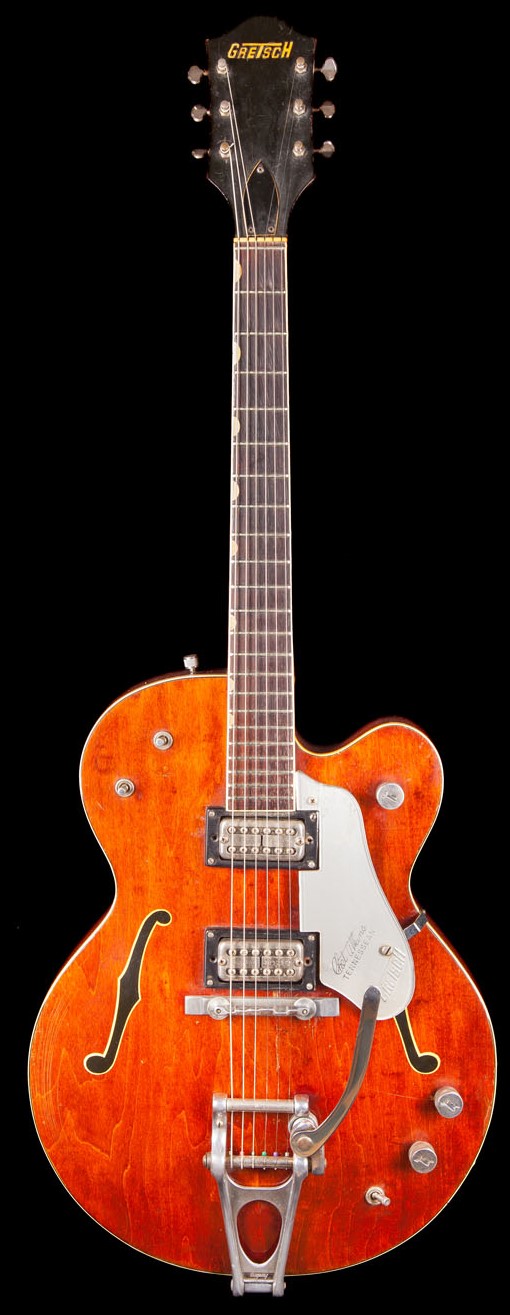 The second verse is, therefore, Little Richard's first verse, which includes the nonsense lyrics "one, two, three, four, five, six, seven, eight, nine." Then, instead of going directly into the "Hey-Hey-Hey-Hey!" section of the song as Little Richard does, The Beatles feel that the solo section works better here. George Harrison performs an inventive ad-libbed guitar solo over the same verse chord pattern. One reason that the second take wasn't used was because George's solo was less inspired and fell apart toward the end, leading Paul to throw in some off-the-cuff vocal embellishments to try to cover it up. This wasn't needed the first time around, since the solo worked perfectly. The second verse is, therefore, Little Richard's first verse, which includes the nonsense lyrics "one, two, three, four, five, six, seven, eight, nine." Then, instead of going directly into the "Hey-Hey-Hey-Hey!" section of the song as Little Richard does, The Beatles feel that the solo section works better here. George Harrison performs an inventive ad-libbed guitar solo over the same verse chord pattern. One reason that the second take wasn't used was because George's solo was less inspired and fell apart toward the end, leading Paul to throw in some off-the-cuff vocal embellishments to try to cover it up. This wasn't needed the first time around, since the solo worked perfectly.
 The twelfth measure of the solo consists of the trademark "Beatles break" (which also happened to be on the Little Richard version), which allows for Paul's introduction of the "Hey-Hey-Hey-Hey!" section of the song. The band kicks in for the fourth verse with John, George and Ringo answering Paul's yelps in unison just as The Chimes did on the Little Richard recording. While Little Richard put the instrumental (saxophone) section in between two verses of "hey-hey-hey-hey," The Beatles put both of them together for good effect. The twelfth measure of the solo consists of the trademark "Beatles break" (which also happened to be on the Little Richard version), which allows for Paul's introduction of the "Hey-Hey-Hey-Hey!" section of the song. The band kicks in for the fourth verse with John, George and Ringo answering Paul's yelps in unison just as The Chimes did on the Little Richard recording. While Little Richard put the instrumental (saxophone) section in between two verses of "hey-hey-hey-hey," The Beatles put both of them together for good effect.
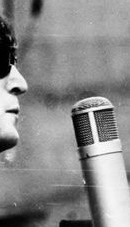 This is then followed by the sixth and seventh verses focusing on the lyrics "bye-bye, baby, bye," which come from Little Richard's "Hey-Hey-Hey-Hey" as well as his original version of "Kansas City" that was recorded in 1955. The Beatles really 'bring it home' by adding harmonized answer vocals from John and George that are absent from the original Little Richard recording. And with the appearance of handclaps and piano accents for the remainder of the song, it fades with the general feeling that we've just experienced The Beatles at their best! This is then followed by the sixth and seventh verses focusing on the lyrics "bye-bye, baby, bye," which come from Little Richard's "Hey-Hey-Hey-Hey" as well as his original version of "Kansas City" that was recorded in 1955. The Beatles really 'bring it home' by adding harmonized answer vocals from John and George that are absent from the original Little Richard recording. And with the appearance of handclaps and piano accents for the remainder of the song, it fades with the general feeling that we've just experienced The Beatles at their best!
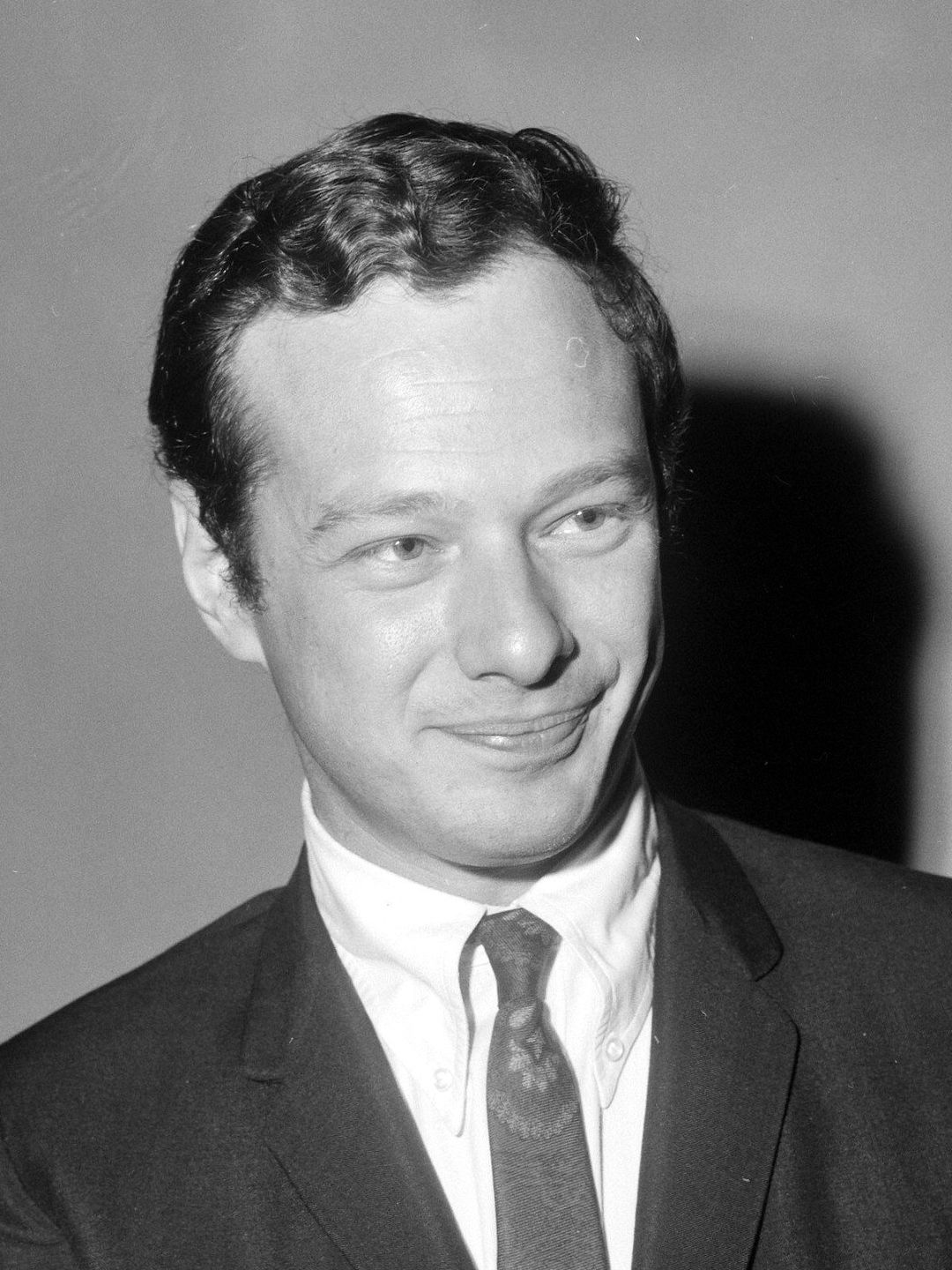 The Beatles had the incredible experience of being, by manager Brian Epstein's doing, the support act for Little Richard at a couple of local British shows in October 1962, as well as during their Hamburg stay in November of that year. McCartney took advantage of this opportunity by not only meeting his hero but having Little Richard teach him the secret of his scream. The evidence of this is heard, and felt, on this recording of "Kansas City/Hey-Hey-Hey-Hey!" Coupling this with his walking blues bass lines, Paul is without a doubt the showcase player on this cover song. The Beatles had the incredible experience of being, by manager Brian Epstein's doing, the support act for Little Richard at a couple of local British shows in October 1962, as well as during their Hamburg stay in November of that year. McCartney took advantage of this opportunity by not only meeting his hero but having Little Richard teach him the secret of his scream. The evidence of this is heard, and felt, on this recording of "Kansas City/Hey-Hey-Hey-Hey!" Coupling this with his walking blues bass lines, Paul is without a doubt the showcase player on this cover song.
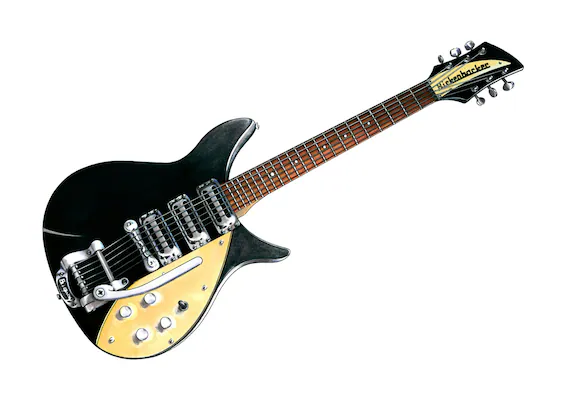 George Harrison, as mentioned above, shows his guitar prowess by concocting a more-than-suitable ad-libbed guitar solo, as well as displaying his usual rhythm guitar flare throughout. George and John both play backing vocalist with spot-on accuracy with the nasal overtones of Lennon's voice dominating the "bye-bye" portion of the recording. Lennon's Rickenbacker rhythm work, coupled with Ringo's driving swing beat, propels the song convincingly. And they all clapped well too. George Harrison, as mentioned above, shows his guitar prowess by concocting a more-than-suitable ad-libbed guitar solo, as well as displaying his usual rhythm guitar flare throughout. George and John both play backing vocalist with spot-on accuracy with the nasal overtones of Lennon's voice dominating the "bye-bye" portion of the recording. Lennon's Rickenbacker rhythm work, coupled with Ringo's driving swing beat, propels the song convincingly. And they all clapped well too.
 Also worthy of mention is George Martin's piano work, which shows his ability to transcend his classical upbringing to 'rock with the best of them.' His fast moving chorded triplets add a fullness to the proceedings, even though their appearance is more subtle than dominant in the mix. Also worthy of mention is George Martin's piano work, which shows his ability to transcend his classical upbringing to 'rock with the best of them.' His fast moving chorded triplets add a fullness to the proceedings, even though their appearance is more subtle than dominant in the mix.
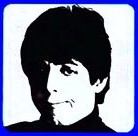 If one is to pay attention to the lyrics, we'll see that Little Richard's adaptation of the original Jerry Leiber and Mike Stoller song changes the story from "going to Kansas City" to get some of the "crazy way of loving" for themselves (or "crazy little women") to getting his "baby back home." Little Richard says that it's been "a long, long time since my baby's been gone" and he asks her, "what's been wrong with you?" This is a far cry from the original sentiment of the song, which was to be "standing on the corner...with his Kansas City baby and a bottle of Kansas City wine." But with Little Richard lyrics that include counting from one to nine, I guess we're really not supposed to be paying attention to lyrics anyway. If one is to pay attention to the lyrics, we'll see that Little Richard's adaptation of the original Jerry Leiber and Mike Stoller song changes the story from "going to Kansas City" to get some of the "crazy way of loving" for themselves (or "crazy little women") to getting his "baby back home." Little Richard says that it's been "a long, long time since my baby's been gone" and he asks her, "what's been wrong with you?" This is a far cry from the original sentiment of the song, which was to be "standing on the corner...with his Kansas City baby and a bottle of Kansas City wine." But with Little Richard lyrics that include counting from one to nine, I guess we're really not supposed to be paying attention to lyrics anyway.
American Releases
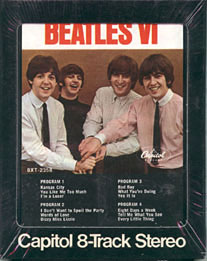 June 14th, 1965 was the release date of Capitol's "Beatles VI" album. Whether they planned it or not, Capitol held off placing "Kansas City" (as the song was titled on all Beatles US Capitol releases as the time) on their previous album "Beatles '65" in order to use it as the "potboiler" opening song of the next album. What more of an exciting introduction to an album could there be than this rousing rock 'n' roll anthem? "Beatles VI" was then released on compact disc on January 21st, 2014, both the mono and stereo versions of the album contained on one CD. June 14th, 1965 was the release date of Capitol's "Beatles VI" album. Whether they planned it or not, Capitol held off placing "Kansas City" (as the song was titled on all Beatles US Capitol releases as the time) on their previous album "Beatles '65" in order to use it as the "potboiler" opening song of the next album. What more of an exciting introduction to an album could there be than this rousing rock 'n' roll anthem? "Beatles VI" was then released on compact disc on January 21st, 2014, both the mono and stereo versions of the album contained on one CD.
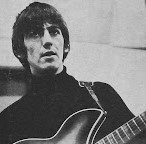 What is interesting to note about this release is the flaw that appears in the fifth measure of the guitar solo. The entire recording actually cuts out for a miniscule second. This is probably due to a tape flaw in the copy that was sent to Capitol and not from an edit, since this was a complete live recording. This flaw was corrected on every compact disc release. What is interesting to note about this release is the flaw that appears in the fifth measure of the guitar solo. The entire recording actually cuts out for a miniscule second. This is probably due to a tape flaw in the copy that was sent to Capitol and not from an edit, since this was a complete live recording. This flaw was corrected on every compact disc release.
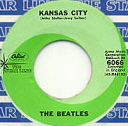 Capitol even thought enough of the song to issue it on a single. On October 11th, 1965, they released six singles on their budget Star Line label, four of which were originally released through Vee-Jay Records in 1964. To sweeten the pot, Capitol concocted two more singles, one of which paired "Kansas City" with "Boys." All six of these singles were only in print until December 31st, 1965 and are highly collectable today. Capitol even thought enough of the song to issue it on a single. On October 11th, 1965, they released six singles on their budget Star Line label, four of which were originally released through Vee-Jay Records in 1964. To sweeten the pot, Capitol concocted two more singles, one of which paired "Kansas City" with "Boys." All six of these singles were only in print until December 31st, 1965 and are highly collectable today.
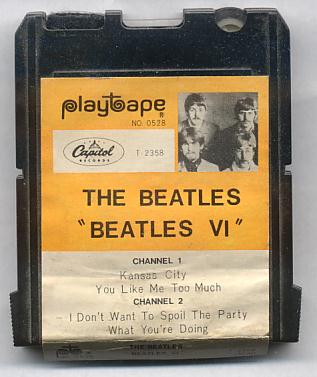 Sometime in 1967, Capitol released Beatles music on a brand new but short-lived format called "Playtapes." These tape cartridges did not have the capability to include entire albums, so two seperate truncated four-song versions of "Beatles VI" were released in this portable format, "Kansas City" being on one of them. These "Playtapes" are highly collectable today. Sometime in 1967, Capitol released Beatles music on a brand new but short-lived format called "Playtapes." These tape cartridges did not have the capability to include entire albums, so two seperate truncated four-song versions of "Beatles VI" were released in this portable format, "Kansas City" being on one of them. These "Playtapes" are highly collectable today.
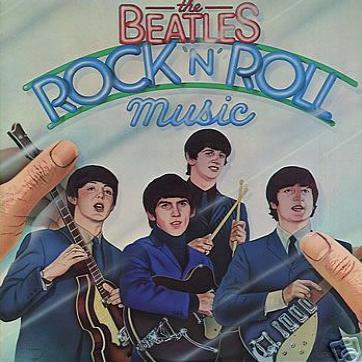 On June 6th, 1976, Capitol released a double-album compilation as a companion to the dual sets that were released by Apple three years earlier. This third set focused on the harder edged songs in The Beatles catalog, hence the name "Rock 'n' Roll Music." Not surprisingly, "Kansas City" found its way onto this highly successful album, which peaked at #2 on the US Billboard album chart. Original producer George Martin was consulted regarding the preparation of this album and, with access to only the Capitol mixes, decided it was necessary to reverse the right and left channels of the original stereo mix of this song for this album, the bass frequencies also being raised throughout. On June 6th, 1976, Capitol released a double-album compilation as a companion to the dual sets that were released by Apple three years earlier. This third set focused on the harder edged songs in The Beatles catalog, hence the name "Rock 'n' Roll Music." Not surprisingly, "Kansas City" found its way onto this highly successful album, which peaked at #2 on the US Billboard album chart. Original producer George Martin was consulted regarding the preparation of this album and, with access to only the Capitol mixes, decided it was necessary to reverse the right and left channels of the original stereo mix of this song for this album, the bass frequencies also being raised throughout.
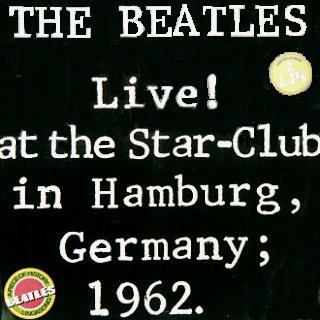 June 13th, 1977 saw the first release of the rough recording of the song made during the 1962 Christmas season in Hamburg, Germany. "Live! At the Star Club in Hamburg, Germany; 1962" was a double album that came out on the small Lingasong label, which limped up the Billboard album chart to #111 until Beatles fans realized what a poor recording it was. June 13th, 1977 saw the first release of the rough recording of the song made during the 1962 Christmas season in Hamburg, Germany. "Live! At the Star Club in Hamburg, Germany; 1962" was a double album that came out on the small Lingasong label, which limped up the Billboard album chart to #111 until Beatles fans realized what a poor recording it was.
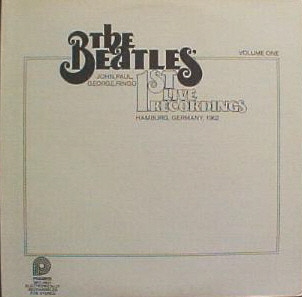 That didn't stop Pickwick Records from acquiring the tapes and releasing it in various forms, starting in 1978. In that year they released three volumes of "Recorded Live In Hamburg 1962," "Kansas City/Hey Hey Hey Hey" being included on both "Volume 2" and "Volume 3." Then, in 1979, "First Live Recordings, Volume One" was released by Pickwick and contained "Kansas City," while a second volume was also released to cover the other half of the tracks contained on the double Lingasong album noted above. That didn't stop Pickwick Records from acquiring the tapes and releasing it in various forms, starting in 1978. In that year they released three volumes of "Recorded Live In Hamburg 1962," "Kansas City/Hey Hey Hey Hey" being included on both "Volume 2" and "Volume 3." Then, in 1979, "First Live Recordings, Volume One" was released by Pickwick and contained "Kansas City," while a second volume was also released to cover the other half of the tracks contained on the double Lingasong album noted above.
Capitol decided to market the double "Rock 'n' Roll Music" album mentioned above differently on October 27th, 1980, dividing the double album into two single albums to sell as budget discs. "Rock 'n' Roll Music, Volume 1" contained "Kansas City."
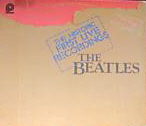 Also sometime in 1980, Pickwick decided to re-combine both of 1979 single albums of the Hamburg tapes detailed above into one double-disc set entitled "The Historic First Recordings," which also includes "Kansas City/Hey Hey Hey Hey." Try to find this one! Also sometime in 1980, Pickwick decided to re-combine both of 1979 single albums of the Hamburg tapes detailed above into one double-disc set entitled "The Historic First Recordings," which also includes "Kansas City/Hey Hey Hey Hey." Try to find this one!
If that weren't enough, two more official vinyl releases of the Hamburg tapes surfaced in the '80s that feature the song, first as a double-album set titled "Live - 1962 - Hamburg Germany" on the Hall Of Music label in 1981. Then, in 1982, Collectables Records released this Hamburg recording as a single, under the name "Kansas City/Hey Hey Hey" with "Ain't Nothing Shaking (But The Leaves On The Tree)" on the b-side.
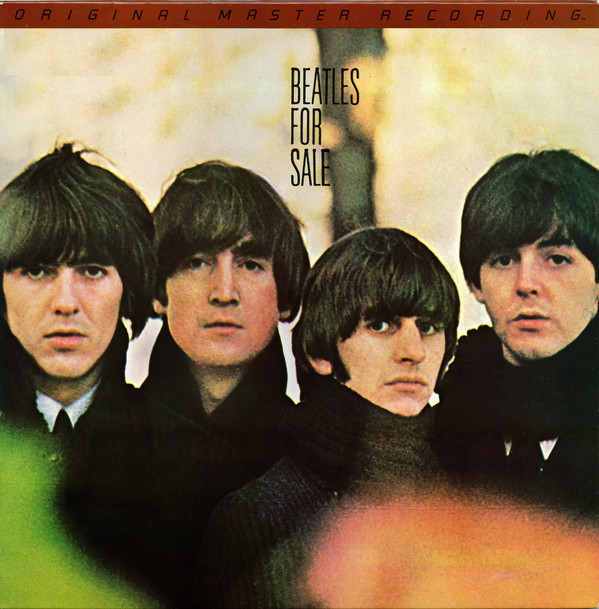 The first time the original British "Beatles For Sale" album was made available in the US was the "Original Master Recording" vinyl edition released through Mobile Fidelity Sound Lab in February of 1987. This album included "Kansas City/Hey-Hey-Hey-Hey" and was prepared here utilizing half-speed mastering technology from the original master tape on loan from EMI. This version of the album was only available for a short time and is quite collectible today. The first time the original British "Beatles For Sale" album was made available in the US was the "Original Master Recording" vinyl edition released through Mobile Fidelity Sound Lab in February of 1987. This album included "Kansas City/Hey-Hey-Hey-Hey" and was prepared here utilizing half-speed mastering technology from the original master tape on loan from EMI. This version of the album was only available for a short time and is quite collectible today.
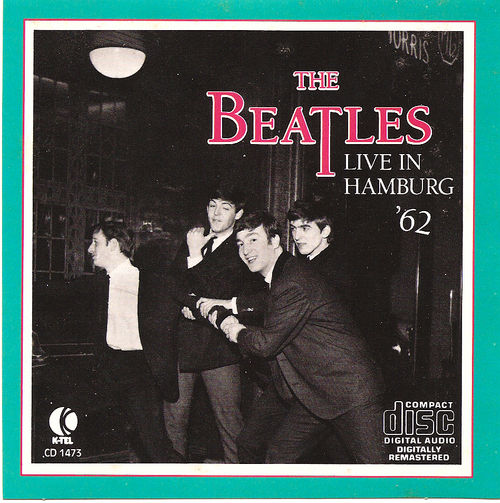 With the dawning of the compact disc era in the '80s, music fans were eagerly waiting for the delayed release of the Beatles catalog on CD. K-Tel Records thought to cash in on this expectation by releasing "Live In Hamburg '62" in early February 1987, which was just prior to the release of the first four Beatles albums by Apple Records. Many Beatles fans couldn't resist owning a live CD by their favorite group that featured 20 tracks including "Kansas City/Hey-Hey-Hey-Hey," not realizing that this was such a lo-fi rough recording as released many times before on vinyl, as detailed above. With the dawning of the compact disc era in the '80s, music fans were eagerly waiting for the delayed release of the Beatles catalog on CD. K-Tel Records thought to cash in on this expectation by releasing "Live In Hamburg '62" in early February 1987, which was just prior to the release of the first four Beatles albums by Apple Records. Many Beatles fans couldn't resist owning a live CD by their favorite group that featured 20 tracks including "Kansas City/Hey-Hey-Hey-Hey," not realizing that this was such a lo-fi rough recording as released many times before on vinyl, as detailed above.
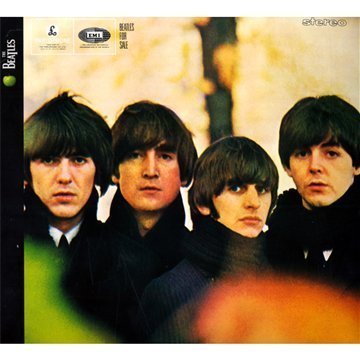 The "Beatles For Sale" album was first released on compact disc on February 26th, 1987, the song's title officially becoming known in the US as "Kansas City / Hey-Hey-Hey-Hey!" in the US from this release onward. The vinyl edition of this CD hit the stores on July 21st, 1987. While these releases were in mono, the stereo version of the album was released on the remastered CD on September 9th, 2009, the remastered stereo vinyl edition coming out on November 13th, 2012. The "Beatles For Sale" album was first released on compact disc on February 26th, 1987, the song's title officially becoming known in the US as "Kansas City / Hey-Hey-Hey-Hey!" in the US from this release onward. The vinyl edition of this CD hit the stores on July 21st, 1987. While these releases were in mono, the stereo version of the album was released on the remastered CD on September 9th, 2009, the remastered stereo vinyl edition coming out on November 13th, 2012.
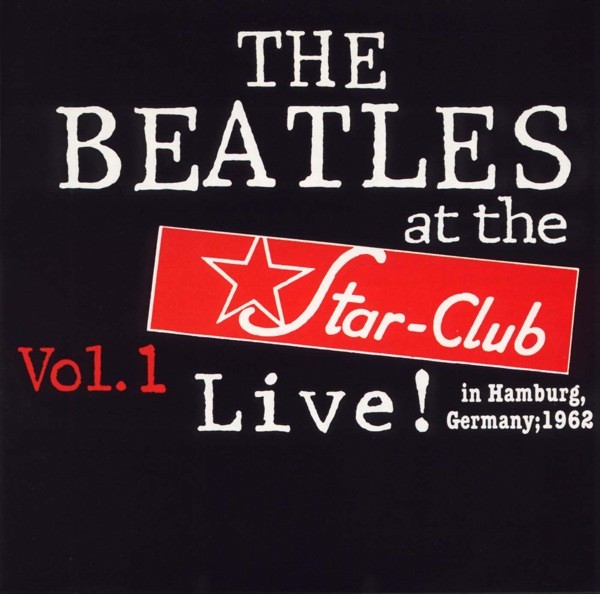 Sometime in 1991, Sony Music took it upon themselves to release two volumes of the above mentioned 1962 Hamburg recordings, "Live! At The Star Club In Hamburg, Germany; 1962 (Vol. 1)" containing "Kansas City/Hey-Hey-Hey-Hey!" The release of these volumes prompted legal action from The Beatles, Sony discontinuing production of these volumes because of a lawsuit that had been filed. By 1998, The Beatles had won the right of ownership of these recordings, any releases surfacing after this point being illegally produced bootlegs. Sometime in 1991, Sony Music took it upon themselves to release two volumes of the above mentioned 1962 Hamburg recordings, "Live! At The Star Club In Hamburg, Germany; 1962 (Vol. 1)" containing "Kansas City/Hey-Hey-Hey-Hey!" The release of these volumes prompted legal action from The Beatles, Sony discontinuing production of these volumes because of a lawsuit that had been filed. By 1998, The Beatles had won the right of ownership of these recordings, any releases surfacing after this point being illegally produced bootlegs.
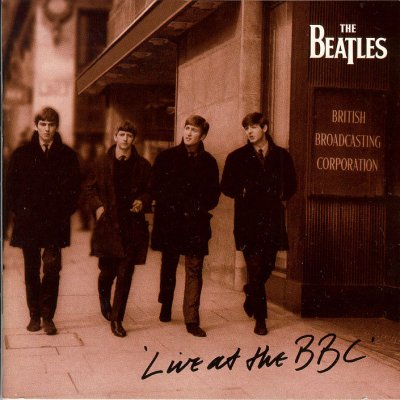 December 6th, 1994 saw the long-awaited release of "Live At The BBC," which featured a version of the song they recorded for the radio show "Pop Go The Beatles" on July 16th, 1963. This recording pre-dates the official EMI recording by over 15 months. On November 11th, 2013, this album was remastered, re-packaged and re-released. December 6th, 1994 saw the long-awaited release of "Live At The BBC," which featured a version of the song they recorded for the radio show "Pop Go The Beatles" on July 16th, 1963. This recording pre-dates the official EMI recording by over 15 months. On November 11th, 2013, this album was remastered, re-packaged and re-released.
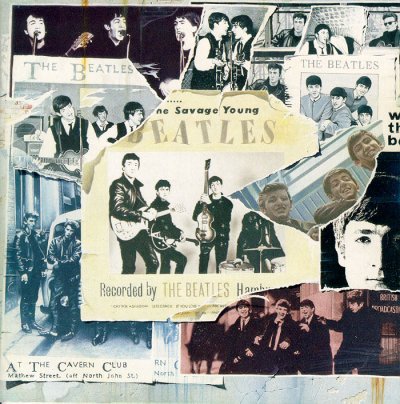 Not to be overlooked is the successful November 21st, 1995 released set "Anthology 1." The very last song in this package is the never-before-heard "take two" of the song recorded on October 18th, 1964 in EMI Studio Two. While there are some flaws, it still comes across as a dynamite performance. Not to be overlooked is the successful November 21st, 1995 released set "Anthology 1." The very last song in this package is the never-before-heard "take two" of the song recorded on October 18th, 1964 in EMI Studio Two. While there are some flaws, it still comes across as a dynamite performance.
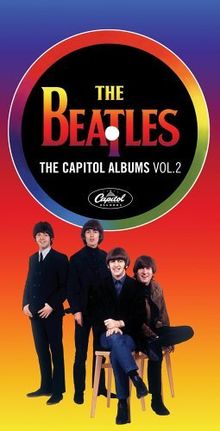 On April 11th, 2006, Capitol released its second box set featuring the original albums as they came out in the '60s. "The Capitol Albums, Vol. 2" contains the entire "Beatles VI" album in both stereo and mono, including the stunning "Kansas City." For initial pressings of this set, Capitol mistakenly presented a "mono type-B" fold-down mono mix for the entire "Beatles VI" album, which was a method that combined both the left and right channels of the stereo mix to create a mono mix. Therefore, the mono mix of "Kansas City" in this set was initially prepared in this way, the error being corrected on subsequent pressings. On April 11th, 2006, Capitol released its second box set featuring the original albums as they came out in the '60s. "The Capitol Albums, Vol. 2" contains the entire "Beatles VI" album in both stereo and mono, including the stunning "Kansas City." For initial pressings of this set, Capitol mistakenly presented a "mono type-B" fold-down mono mix for the entire "Beatles VI" album, which was a method that combined both the left and right channels of the stereo mix to create a mono mix. Therefore, the mono mix of "Kansas City" in this set was initially prepared in this way, the error being corrected on subsequent pressings.
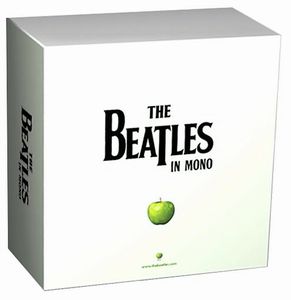 On September 9th, 2009, the CD box set “The Beatles In Mono” was released, which features the entire mono Beatles catalog remastered. The original mono mix of “Kansas City” is contained on the “Beatles For Sale” disc in this collection. The vinyl edition of the box set was released on September 9th, 2014. On September 9th, 2009, the CD box set “The Beatles In Mono” was released, which features the entire mono Beatles catalog remastered. The original mono mix of “Kansas City” is contained on the “Beatles For Sale” disc in this collection. The vinyl edition of the box set was released on September 9th, 2014.
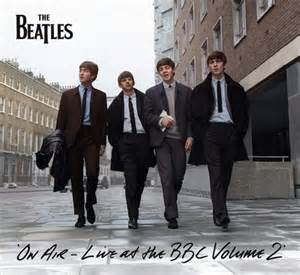 November 11th, 2013 was the release date for the album “On Air – Live At The BBC Volume 2” which featured yet another version of “Kansas City/Hey-Hey-Hey-Hey!” This BBC rendition was recorded on November 25th, 1964 for inclusion on the radio program “Saturday Club.” Interesting here is the background answering vocals from John and George which at times were a little uneven. It was ‘The Beatles Live,’ flaws and all! November 11th, 2013 was the release date for the album “On Air – Live At The BBC Volume 2” which featured yet another version of “Kansas City/Hey-Hey-Hey-Hey!” This BBC rendition was recorded on November 25th, 1964 for inclusion on the radio program “Saturday Club.” Interesting here is the background answering vocals from John and George which at times were a little uneven. It was ‘The Beatles Live,’ flaws and all!
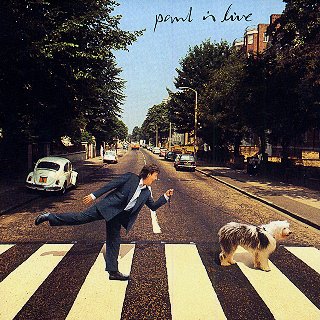 Paul McCartney has also released albums featuring the song. On October 29th, 1991, his album "CHOBa B CCCP" was released in the US, which was an album Paul recorded in July of 1987 for release in Russia. His live album "Paul Is Live" also contains the song, which was released on November 15th, 1993. Both of these versions show Paul going back to the original lyrics as written by Jerry Leiber and Mike Stoller. Paul McCartney has also released albums featuring the song. On October 29th, 1991, his album "CHOBa B CCCP" was released in the US, which was an album Paul recorded in July of 1987 for release in Russia. His live album "Paul Is Live" also contains the song, which was released on November 15th, 1993. Both of these versions show Paul going back to the original lyrics as written by Jerry Leiber and Mike Stoller.
Live Performances
The Beatles added Little Richard's version of "Kansas City" to their repertoire in 1961 due to their need to expand their set lists while in Hamburg. Of course, since Paul McCartney had such a fondness for the song, they also included it in their Cavern Club performances back home.
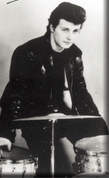 In fact, The Beatles performed the song the first time they were filmed for British television. On August 22nd, 1962, a crew from Granada Television was sent to a lunchtime session at the Cavern Club to film a sequence for an upcoming episode of "Know The North." This filming was done only six days after drummer Pete Best was fired and new drummer Ringo Starr replaced him. Two songs were filmed, these being "Some Other Guy" and "Kansas City." Unfortunately, the footage was not considered good enough to air on television at the time. It was shelved until November of 1963 (just before their second album "With The Beatles" was released in Britain) where it was shown on the show "Scene At 6:30," but only "Some Other Guy" was viewed at that time. In fact, The Beatles performed the song the first time they were filmed for British television. On August 22nd, 1962, a crew from Granada Television was sent to a lunchtime session at the Cavern Club to film a sequence for an upcoming episode of "Know The North." This filming was done only six days after drummer Pete Best was fired and new drummer Ringo Starr replaced him. Two songs were filmed, these being "Some Other Guy" and "Kansas City." Unfortunately, the footage was not considered good enough to air on television at the time. It was shelved until November of 1963 (just before their second album "With The Beatles" was released in Britain) where it was shown on the show "Scene At 6:30," but only "Some Other Guy" was viewed at that time.
With the shorter set lists of 1963, they put aside "Kansas City" for the time being. The only known performances of the song this year were for BBC radio on August 6th, as detailed above under "Recording History," and one other BBC radio broadcast on May 18th, 1964.
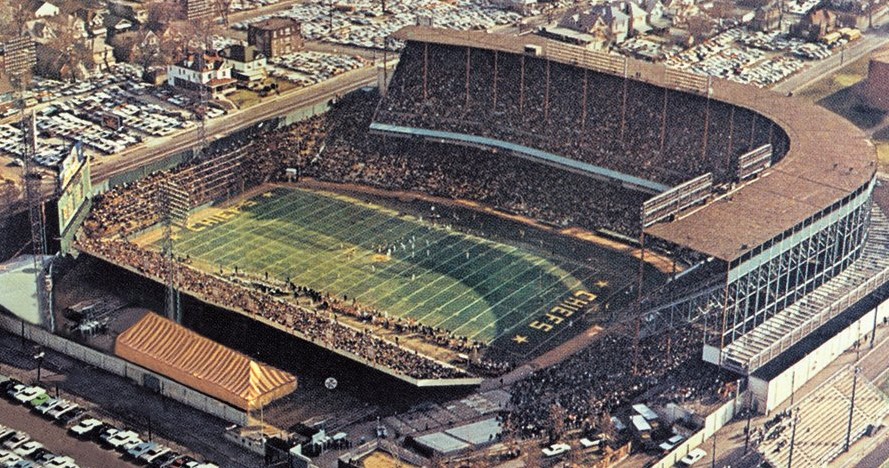 Then, near the end of their first extensive US tour in 1964, they were cajoled into adding another show to their hectic schedule. This show was to be in none other than Kansas City, Missouri at the Municipal Stadium. Even though Charles Finley (owner of Kansas City Athletics) kept getting turned down by Brian Epstein, he convinced them to add the date September 17th for a Kansas City show by offering them $150,000 - the largest amount ever paid for a single performance up to that point in history. Then, near the end of their first extensive US tour in 1964, they were cajoled into adding another show to their hectic schedule. This show was to be in none other than Kansas City, Missouri at the Municipal Stadium. Even though Charles Finley (owner of Kansas City Athletics) kept getting turned down by Brian Epstein, he convinced them to add the date September 17th for a Kansas City show by offering them $150,000 - the largest amount ever paid for a single performance up to that point in history.
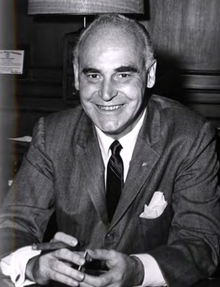 Since Chuck Finley was supplying such an enormous fee, he decided to ask The Beatles to perform more than their usual eleven songs. John Lennon said no. Even when more money was offered, Lennon still refused, saying, "Chuck, you shouldn't have spent so much money on us." Nonetheless, The Beatles did add one song to the show, starting things off with McCartney's favorite song "Kansas City/Hey-Hey-Hey-Hey!," which resulted in a fantastic reception from the audience. This performance, no doubt, led to their proper recording of the song in EMI studios a month later. Since Chuck Finley was supplying such an enormous fee, he decided to ask The Beatles to perform more than their usual eleven songs. John Lennon said no. Even when more money was offered, Lennon still refused, saying, "Chuck, you shouldn't have spent so much money on us." Nonetheless, The Beatles did add one song to the show, starting things off with McCartney's favorite song "Kansas City/Hey-Hey-Hey-Hey!," which resulted in a fantastic reception from the audience. This performance, no doubt, led to their proper recording of the song in EMI studios a month later.
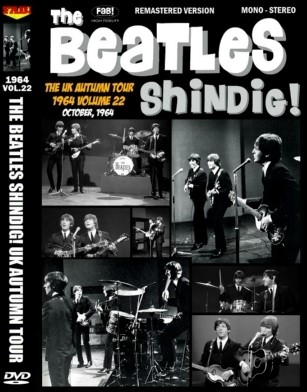 Meanwhile, The Beatles decided to include the song in an American television broadcast for the successful show "Shindig." The live performance was filmed at The Granville Studio in London on October 3rd and was shown in America only on October 7th, 1964. Then on November 23rd, British television got to see The Beatles perform the song on "Ready, Steady, Go!" This lip-synced performance was taped on November 23rd and was shown on November 27th, a full week before the album containing the song was released. Meanwhile, The Beatles decided to include the song in an American television broadcast for the successful show "Shindig." The live performance was filmed at The Granville Studio in London on October 3rd and was shown in America only on October 7th, 1964. Then on November 23rd, British television got to see The Beatles perform the song on "Ready, Steady, Go!" This lip-synced performance was taped on November 23rd and was shown on November 27th, a full week before the album containing the song was released.
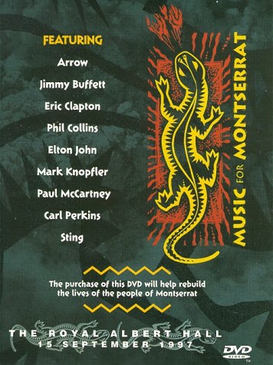 Paul McCartney did return to "Kansas City / Hey-Hey-Hey-Hey!" during his solo touring days on rare occasions. During his "New World Tour" of 1993, he performed the song just once - at his show on May 31st in Kansas City. Also, at the "Music For Montserrat 1997" show, Paul stepped up to the microphone to sing the song fronting a celebrity band featuring Sting, Elton John, Phil Collins, Carl Perkins, Eric Clapton, Ray Cooper, Jools Holland and many more. Paul McCartney did return to "Kansas City / Hey-Hey-Hey-Hey!" during his solo touring days on rare occasions. During his "New World Tour" of 1993, he performed the song just once - at his show on May 31st in Kansas City. Also, at the "Music For Montserrat 1997" show, Paul stepped up to the microphone to sing the song fronting a celebrity band featuring Sting, Elton John, Phil Collins, Carl Perkins, Eric Clapton, Ray Cooper, Jools Holland and many more.
Conclusion
 "It requires a great deal of nerve to just jump up and scream like an idiot, you know," McCartney stated in interview. "Anyway, I would often fall a little bit short, not have that little kick, that soul, and it would be John who would go, 'Come on! You can sing it better than that, man! Come on, come on, really throw it...Knock the sh*t out of Kansas City!' All right, John, OK...just when the engineers thought they had a vocal they could handle." "It requires a great deal of nerve to just jump up and scream like an idiot, you know," McCartney stated in interview. "Anyway, I would often fall a little bit short, not have that little kick, that soul, and it would be John who would go, 'Come on! You can sing it better than that, man! Come on, come on, really throw it...Knock the sh*t out of Kansas City!' All right, John, OK...just when the engineers thought they had a vocal they could handle."
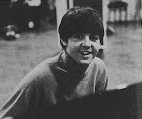 So while Paul was obviously the key figure in their rendition of "Kansas City / Hey-Hey-Hey-Hey!," it was John's encouragement that brought it to that next level. Writers and reviewers tend to view things individually within the band, saying 'Paul did this while John did that' and so on, but what we all fail to realize is that they always worked together and supported each other to construct the "Beatles sound." Possibly, looking at things as a whole instead of dissected will give us a clearer and more accurate picture, as Paul's quote above indicates. Especially during the first few recording years, The Beatles were four men cooperating for the same goal - to take the world by storm! So while Paul was obviously the key figure in their rendition of "Kansas City / Hey-Hey-Hey-Hey!," it was John's encouragement that brought it to that next level. Writers and reviewers tend to view things individually within the band, saying 'Paul did this while John did that' and so on, but what we all fail to realize is that they always worked together and supported each other to construct the "Beatles sound." Possibly, looking at things as a whole instead of dissected will give us a clearer and more accurate picture, as Paul's quote above indicates. Especially during the first few recording years, The Beatles were four men cooperating for the same goal - to take the world by storm!
Song Summary
"Kansas City/Hey-Hey-Hey-Hey!"
Written by: Jerry Leiber / Mike Stoller / Richard Penniman
-
Song Written: 1951
- Song Recorded: October 18, 1964
- First US Release Date: June 14, 1965
- First US Album Release: Capitol #ST-2358 "Beatles VI"
- US Single Release: Capitol Star Line #6066 (b-side to "Boys")
- Highest Chart Position: n/a
- British Album Release: Parlophone #PCS 3062 "Beatles For Sale"
- Length: 2:30
- Key: G major
- Producer: George Martin
- Engineers: Norman Smith, Geoff Emerick
Instrumentation (most likely):
- Paul McCartney - Lead Vocals, Bass Guitar (1963 Hofner 500/1), handclaps
- John Lennon - Rhythm Guitar (1964 Rickenbacker 325), backing vocals, handclaps
- George Harrison - Lead Guitar (1963 Gretsch 6119 Tennessean), backing vocals, handclaps
- Ringo Starr - Drums (1964 Ludwig Super Classic Black Oyster Pearl), backing vocals, handclaps
- George Martin - Piano (1905 Steinway Vertegrand upright)
Written and compiled by Dave Rybaczewski
|
IF YOU WOULD LIKE TO MAKE A DONATION TO KEEP THIS WEBSITE UP AND RUNNING, PLEASE CLICK BELOW!
|